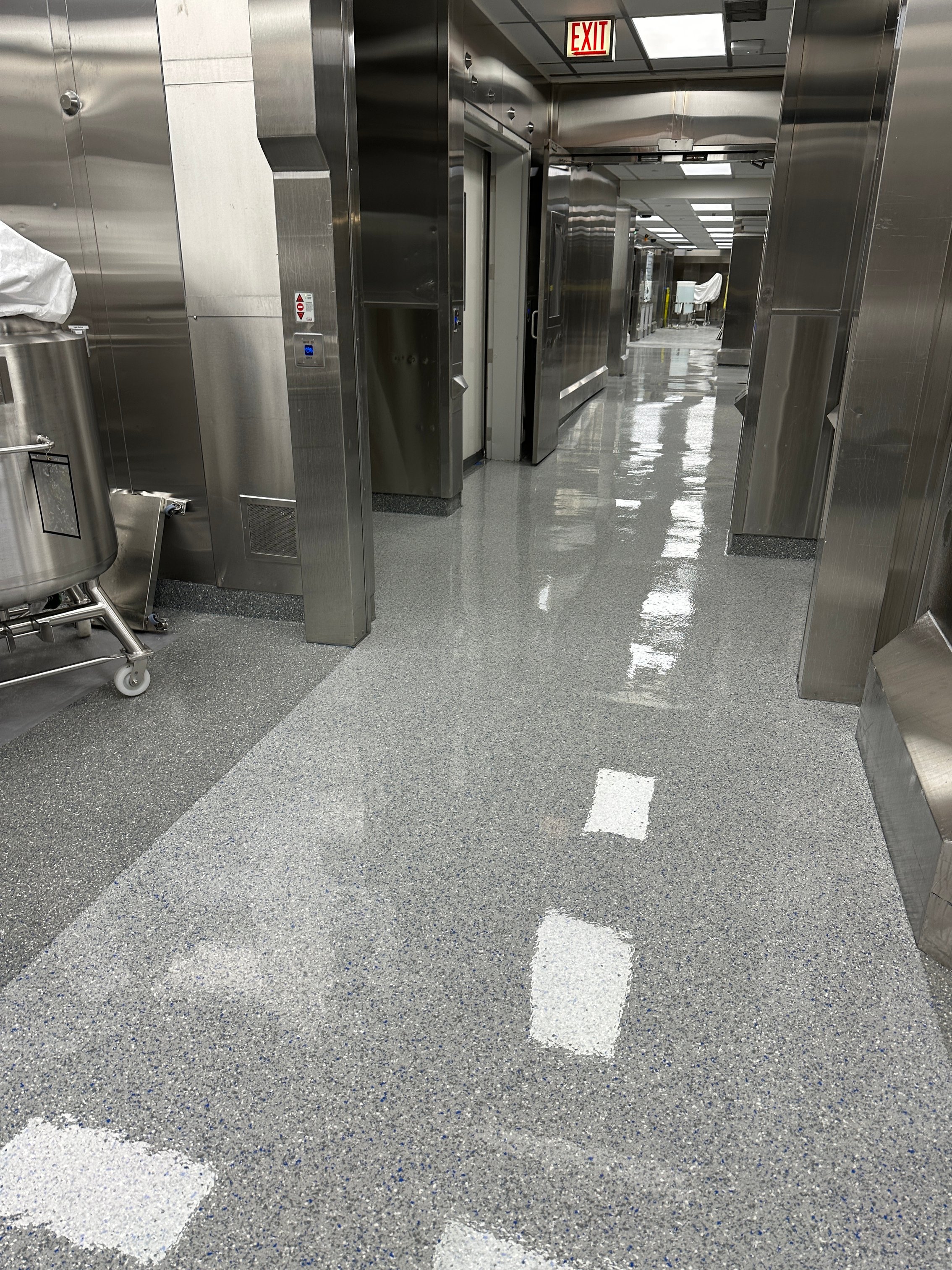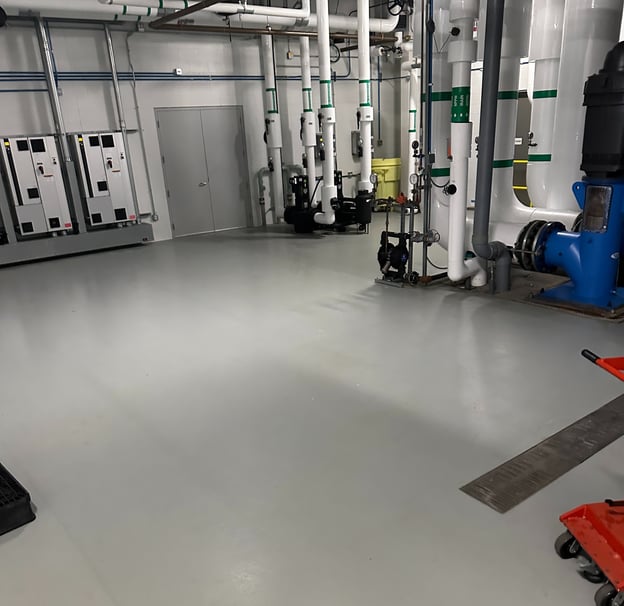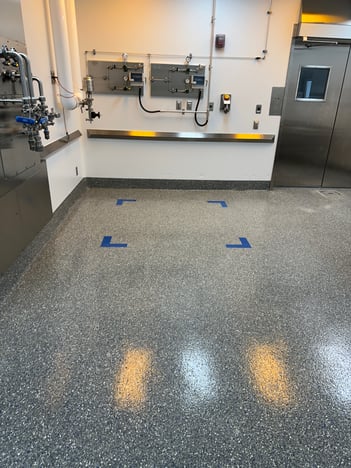

August 1st, 2025
3 min read
By Tom Dassie

Clean, safe, and compliant floors aren’t optional in pharmaceutical manufacturing—they’re essential. In facilities where strict regulations and hygiene standards govern every inch of space, the flooring beneath your feet plays a vital role. From ensuring product purity to protecting workers and maintaining FDA compliance, every flooring choice carries long-term consequences.
So why do so many pharmaceutical manufacturers choose epoxy and urethane cement flooring systems? Because they’re built to meet the demands of this exact environment—offering durability, chemical resistance, and seamless sanitation all in one system.
In this blog, we’ll break down what makes these two materials so well-suited for pharmaceutical spaces and what to consider when choosing a system for your facility.
Before diving into product types, let’s look at the flooring performance requirements that pharmaceutical facilities typically need:
These aren’t optional. They’re essential for meeting FDA, cGMP, and ISO compliance while keeping the workspace safe and efficient.
That’s where epoxy and urethane cement come into play.
Epoxy floor coatings are known for their smooth, hard finish and excellent chemical resistance. When applied properly over a prepared substrate, they form a seamless, non-porous surface that’s easy to clean and difficult for microbes to penetrate.
Here’s why they’re commonly chosen for pharmaceutical facilities:
Best Uses of Epoxy in Pharma Settings:
However, epoxy has limitations in high-moisture areas and spaces that experience heavy thermal cycling. That’s where urethane cement excels.

When durability, moisture resistance, and thermal tolerance are top concerns, urethane cement is the go-to choice. This system combines urethane resins with cementitious fillers to form a thick, textured surface that bonds directly to concrete—even in damp conditions.
Key advantages include:
Best Uses of Urethane Cement in Pharma Settings:
Urethane cement is often more expensive upfront, but its longer service life and lower maintenance costs often offset the investment over time.

So which system is right for your pharmaceutical manufacturing space? It often comes down to where in the facility the flooring will be installed and what demands it will face.
Choose epoxy when:
Choose urethane cement when:
In some facilities, a hybrid approach works best—using urethane cement in production areas and epoxy in less demanding spaces.
In pharmaceutical manufacturing, facility design isn’t just about function—it’s about compliance. Choosing the right floor means fewer shutdowns, fewer maintenance issues, and better chances of passing audits.
Both epoxy and urethane cement can be installed as part of cGMP-compliant flooring systems when done by experienced contractors. They can also be integrated with curbs, base coving, and wall systems to create fully seamless, hygienic surfaces from the ground up.
Your flooring isn’t just a background surface—it’s a frontline defense against contamination, inefficiency, and downtime. For pharmaceutical manufacturing environments that demand peak performance, epoxy and urethane cement flooring systems offer proven solutions.
Each system brings its own strengths to the table. By choosing the right material for each space within your facility, you can extend your floor’s life, support compliance goals, and ensure a safer, cleaner environment for everyone.
When it comes to high-stakes spaces like pharmaceutical manufacturing, flooring decisions matter. And the right choice can make all the difference. For more information, read our next article, “Urethane Cement vs Epoxy Flooring”.